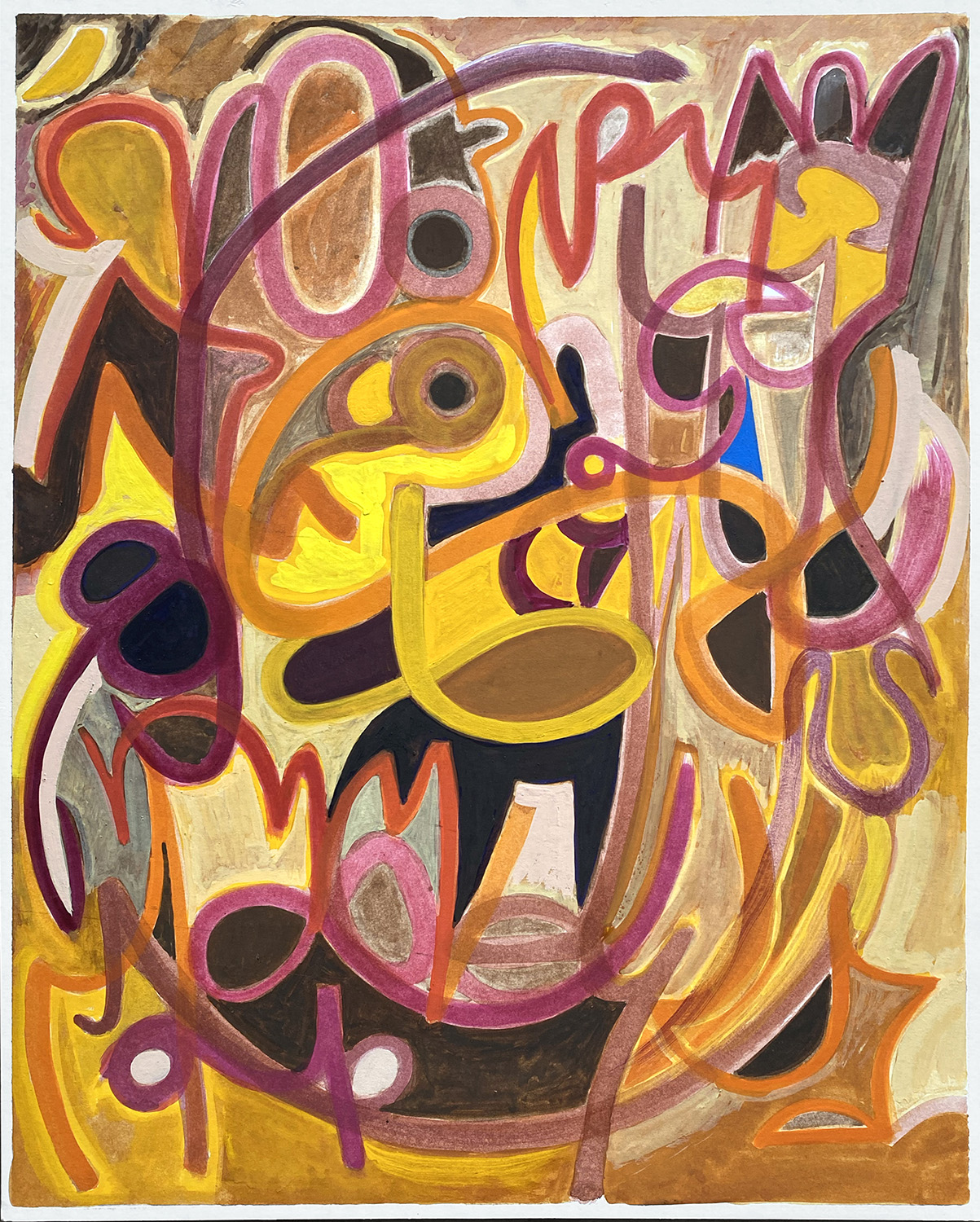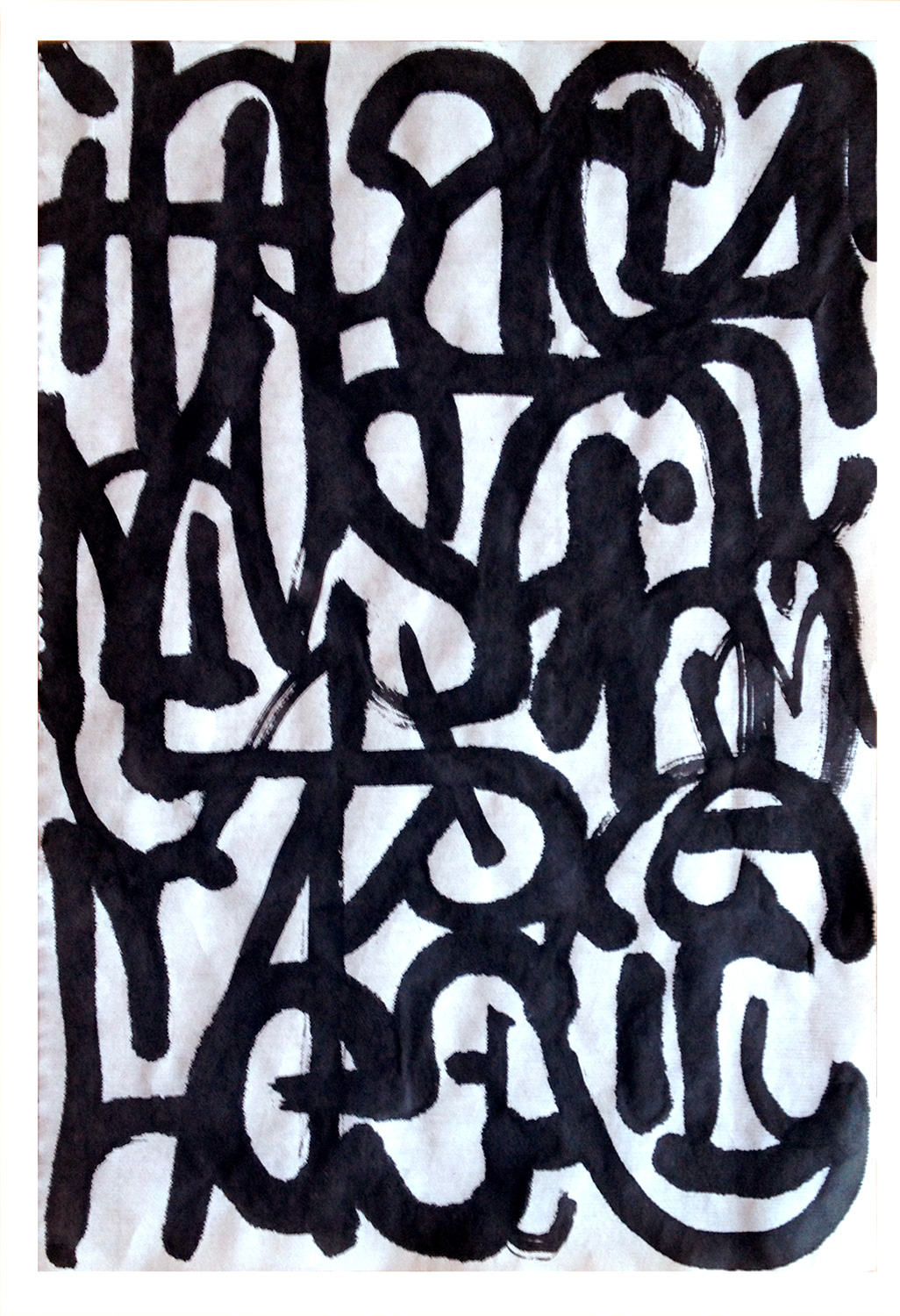Literary Landscapes
Paintings exploring printed text as an environment (project statement below)
Open or download pricelist | Contact: bill@mazzastudio.com
Literary Landscape Cover Series
Accumulation of all the text on the cover of a select book, worked as progressive iterations, then painted.




 Magic Eight Ball (the accumulated text on the answer die), No. 10 | Literary Landscape Cover Series22"x30", gouache on board, 2024
Magic Eight Ball (the accumulated text on the answer die), No. 10 | Literary Landscape Cover Series22"x30", gouache on board, 2024




 Franklin Rosemont and Robin D.G. Kelley (eds.), “Black, Brown & Beige: Surrealist Writings from Africa and the Diaspora,” No. 16 | Literary Landscape Cover Series15"x20", gouache on board, 2021
Franklin Rosemont and Robin D.G. Kelley (eds.), “Black, Brown & Beige: Surrealist Writings from Africa and the Diaspora,” No. 16 | Literary Landscape Cover Series15"x20", gouache on board, 2021
 Susan Sontag, “As Consciousness is Harnessed to Flesh,” #11 | Literary Landscape Cover Series16"x20", gouache on board, 2021
Susan Sontag, “As Consciousness is Harnessed to Flesh,” #11 | Literary Landscape Cover Series16"x20", gouache on board, 2021




In Process
A 5-minute look at the process behind the Literary Landscape Cover Series paintings Silvia Federici, 'Witches, Witch-Hunting, and Women,' from concept to final paintings.
In Sequence
The making of the Literary Landscape painting, John Clark and Camille Martin (ed. & trans.), 'Anarchy, Geography, Modernity: Selected Writings of Elisée Reclus,' p. 124. from originating text to finished painting.
Literary Landscapes
An accumulation of all the text on page or pages of a select book or poem.







Artist Statement | Literary Landscapes
Each painting in the Literary Landscape series is a drawn or painted accumulation of select text from a book or poem meaningful to the artist, a process that simultaneously generates an annotated artifact of the text added on each date until completion. Working with a similar concept, the Literary Landscape Cover Series uses a totality of text—most often the text on the cover of a similarly meaningful book or recording—as the starting point for a series of drawings where the text is accumulated, abstracted, and re-worked in sequential iterations, eventually rendered as 'final' compositions in ink or paint. These works are ideally displayed with a visible or linked reference to the originating texts.
At its root the “Literary Landscape” & “Literary Landscape Cover Series” grew out of the idea of landscape painting as a construct rather than direct representation. With finished large-scale landscapes frequently composed in the studio, the genre of ‘Western’ landscape painting emerged as a unique genre along with the development of modern capitalism and the Nation State: ironically simultaneous with the subsequent disappearance of the very landscapes ‘captured’ as paintings. By this logic traditional landscape painting locates the viewer within the colonial imaginary: an iconography of a disassembled nature, a locus of ‘primitive’ fantasies, or a nostalgic salve for alienation.
By expanding the concept ‘landscape’ to include any mediated environment such as television broadcasts, printed text, or spacial dislocations, the goal is to invite viewers to reconsider the internal or virtual spaces where people increasingly ‘spend time.’ The investigation of text as source material for time spent (rather than ‘nature’), and the inclusion of process artifacts, a reference library, sequential iterations, video, and other ephemera encourages viewers to expand their understanding of the relationship between experiential and visual being. Therefore, the intention of the artist is multifold: the relationship between the written word and understanding; how reading translates to thought; the gap between individual and collective experience of language; the subsequent potential for meaning to be obscured; and how those multiple meanings can present as visual language.